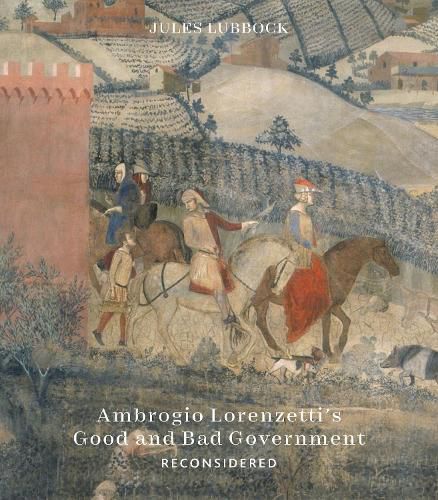Readings Newsletter
Become a Readings Member to make your shopping experience even easier.
Sign in or sign up for free!
You’re not far away from qualifying for FREE standard shipping within Australia
You’ve qualified for FREE standard shipping within Australia
The cart is loading…






A new examination of Ambrogio Lorenzetti's Good and Bad Government through the lens of the Hymn to Justice.
In 1338 Ambrogio Lorenzetti painted three huge frescoes, known today as Good and Bad Government, on the walls of the Sala dei Nove, the Room of the Nine, in the Palazzo Pubblico in Siena, where the city's nine executive magistrates presided over the destiny of this famous commune. The frescoes were meant to be strong visual reminders of the Nove's duties and an admonishment of the nefarious effects of bad government. Boasting the largest artist's signature of all time, the frescoes are a testament to the extremely high esteem in which Ambrogio's art was held by his fellow citizens. Good and Bad Government has become one of the most widely reproduced works of the early Renaissance and is recognised for its many innovations, including the first European panorama of a cityscape and countryside. But what sort of visual journey was Ambrogio asking the Nove to make through this expanse? In pursuit of an elusive answer, the murals have become one of art's great puzzles, challenging scholars and the public. Scant attention, however, has been paid to the images themselves. They have been studied merely as symbols and allegories of abstract political concepts in which good and bad governments are juxtaposed. Despite his enormous signature, Ambrogio has been treated more as a servile illustrator than a creative artist, disregarding his highly personal approach to painting and the way his visual ingenuity, from composition to brushwork, shaped a far more complex and fascinating message.
$9.00 standard shipping within Australia
FREE standard shipping within Australia for orders over $100.00
Express & International shipping calculated at checkout
A new examination of Ambrogio Lorenzetti's Good and Bad Government through the lens of the Hymn to Justice.
In 1338 Ambrogio Lorenzetti painted three huge frescoes, known today as Good and Bad Government, on the walls of the Sala dei Nove, the Room of the Nine, in the Palazzo Pubblico in Siena, where the city's nine executive magistrates presided over the destiny of this famous commune. The frescoes were meant to be strong visual reminders of the Nove's duties and an admonishment of the nefarious effects of bad government. Boasting the largest artist's signature of all time, the frescoes are a testament to the extremely high esteem in which Ambrogio's art was held by his fellow citizens. Good and Bad Government has become one of the most widely reproduced works of the early Renaissance and is recognised for its many innovations, including the first European panorama of a cityscape and countryside. But what sort of visual journey was Ambrogio asking the Nove to make through this expanse? In pursuit of an elusive answer, the murals have become one of art's great puzzles, challenging scholars and the public. Scant attention, however, has been paid to the images themselves. They have been studied merely as symbols and allegories of abstract political concepts in which good and bad governments are juxtaposed. Despite his enormous signature, Ambrogio has been treated more as a servile illustrator than a creative artist, disregarding his highly personal approach to painting and the way his visual ingenuity, from composition to brushwork, shaped a far more complex and fascinating message.